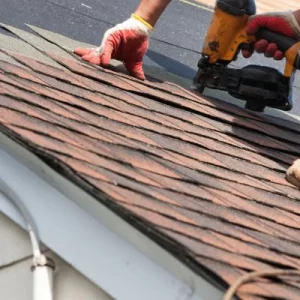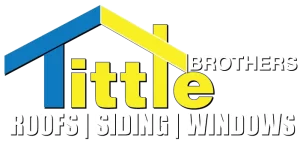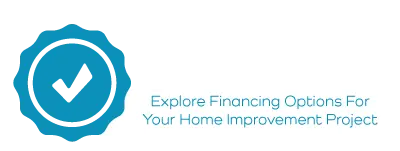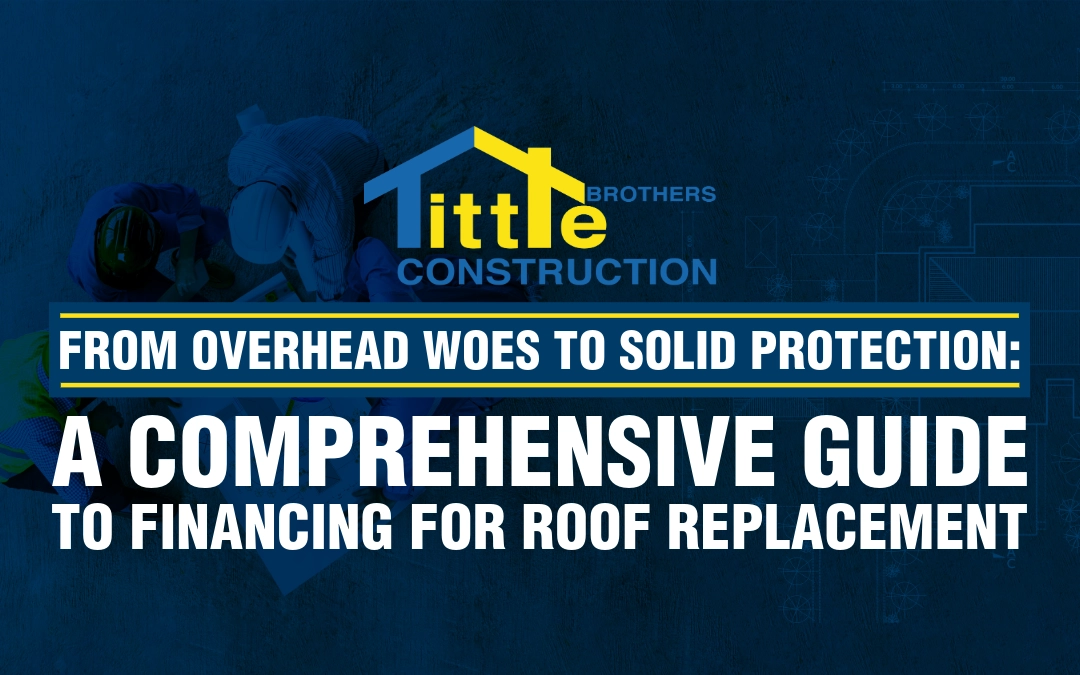If your home requires a roof replacement in the not-too-distant future, remember that many financing options exist to ease the burden on your budget. Financing for roof replacement is not meant to cause undue hardship. On the contrary, attractive lending alternatives enable homeowners to quickly proceed with a roof replacement, especially when time is of the essence.

Financing For Roof Replacement: 8 Options
1. Cash
Cold, hard cash. Indeed, cash remains king (despite the shift toward cashless transactions). Cash (including cash equivalents such as checks and mobile payments) is the most straightforward way to cover an expense, especially if the homeowner wishes to avoid paying interest on any borrowed amount. The decision to choose cash avoids the complications and limitations (including the frequent delays in beginning the roof replacement while waiting for lender approval) associated with other forms of financing.
2. Cash-Out Refinance
If market interest rates are lower than your existing mortgage’s interest rate, you could refinance your mortgage. In effect, as a homeowner, you borrow a new (larger) mortgage and use the difference (between the existing and new mortgage amounts) as a means to “cash out” to finance the roof replacement. This financing alternative will work reasonably well if your home’s value has significantly increased since you secured the current mortgage. Conversely, cash-out refinancing might not be ideal if your home value has dropped.
3. Credit Card
As a homeowner, a “new” credit card (or combination of credit cards) could be a reasonable option if you have strong credit. However, you should plan to pay off your roof replacement quickly (within the introductory promotional or interest-free period). For example, some credit card companies offer a 0% APR promotion that spans for a set time (such as 18 months) before interest rates escalate significantly. If you intend to repay the balance owed within the promotional period, the amount borrowed on a credit card is interest-free.
4. Home Equity Line Of Credit (HELOC)
Through a HELOC, homeowners can tap into their home’s equity as a line of credit (instead of a loan). The house serves as collateral. Rather than receiving a lump sum distribution, the homeowner, as the borrower, accesses a line of credit (on either a fixed or variable interest rate) during a specified draw period (often ten years in length). The homeowner repays any amount withdrawn over time. Borrowers appreciate this flexibility, especially when the date of the home improvement project’s performance and completion is not yet known.
5. Home Equity Loan (Second Mortgage)
A homeowner can borrow up to 85% of the equity in their house with a home equity loan. However, the feasibility of this borrowing alternative depends on the remaining balance of your existing mortgage (because this amount impacts how much “available” equity exists to secure a home equity loan). A home equity loan is considered an installment loan. The borrower receives a lump sum upfront that is paid back periodically (typically monthly) over a set term (such as 10, 20, or 30 years). Avoid defaulting at the risk of a home foreclosure.
6. Homeowner’s Insurance Or Home Warranty Policy
If a roof suffers damage due to a covered peril (such as a storm or a fire) under either a homeowner’s insurance or home warranty policy, the homeowner should consider filing a claim with the policy provider. For a homeowner’s insurance policy, a deductible likely exists. The homeowner should consider the extent of indemnifiable damage before filing a claim (especially if the deductible is larger ($2,500+)). Roof warranty coverage from either the manufacturer or installer may provide an additional average to receive reimbursement.
7. Government-Insured Home Improvement Loan
Homeowners may not have the ideal credit score to secure funds through traditional lending channels. In those instances, government-backed financing programs enable a homeowner to proceed with a necessary home improvement or rehabilitation project, including a roof replacement. For example, an FHA 203(k) Loan (where the borrower can refinance an existing mortgage into an FHA 203(k) loan) or an FHA Title 1 Loan (where the borrower can secure a fixed-rate loan to improve a home) may assist a homeowner with accessing funds.
8. Personal Loan
Although homeowners often don’t consider a personal loan a viable option to secure financing for a home improvement project, this lending alternative can be attractive (depending on loan length, repayment terms, and interest rates). For borrowers with strong creditworthiness, a personal loan with a competitive interest rate might be the best option (compared to other borrowing avenues). Most major banks and financial institutions provide personal loans with shorter repayment lengths (2-6 years) and longer ones (15+ years).
An Additional Option: Roofing Contractor Financing

A homeowner pursuing a home improvement project should consider roofing contractor financing. Although most roofers don’t offer this option, established ones, including Tittle Brothers Construction, will provide this solution. Often, options include no or low interest rates, affordable monthly payments, and flexible borrowing terms for the qualified borrower.
Contact us today to learn more about financing through Tittle Brothers Construction. We assist homeowners in Southeast Detroit to secure the funds they need to replace their roofs.



